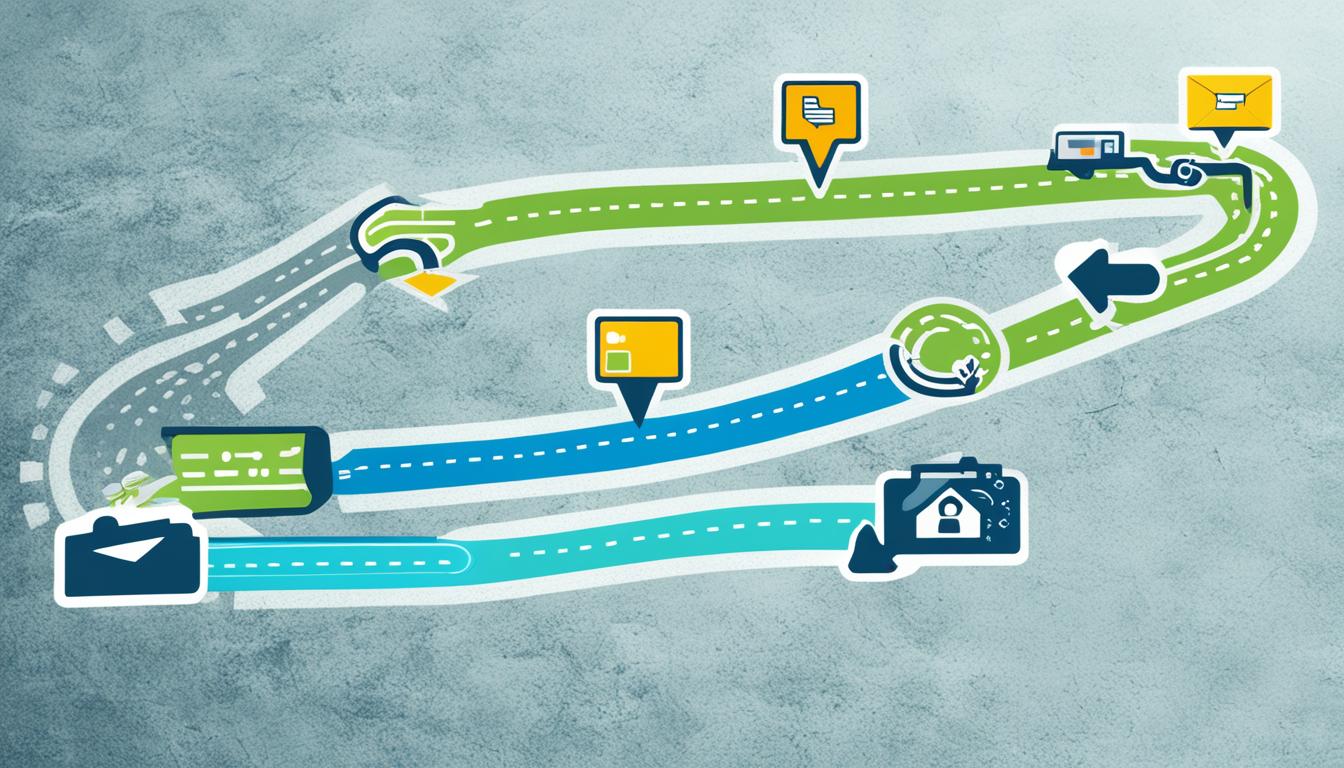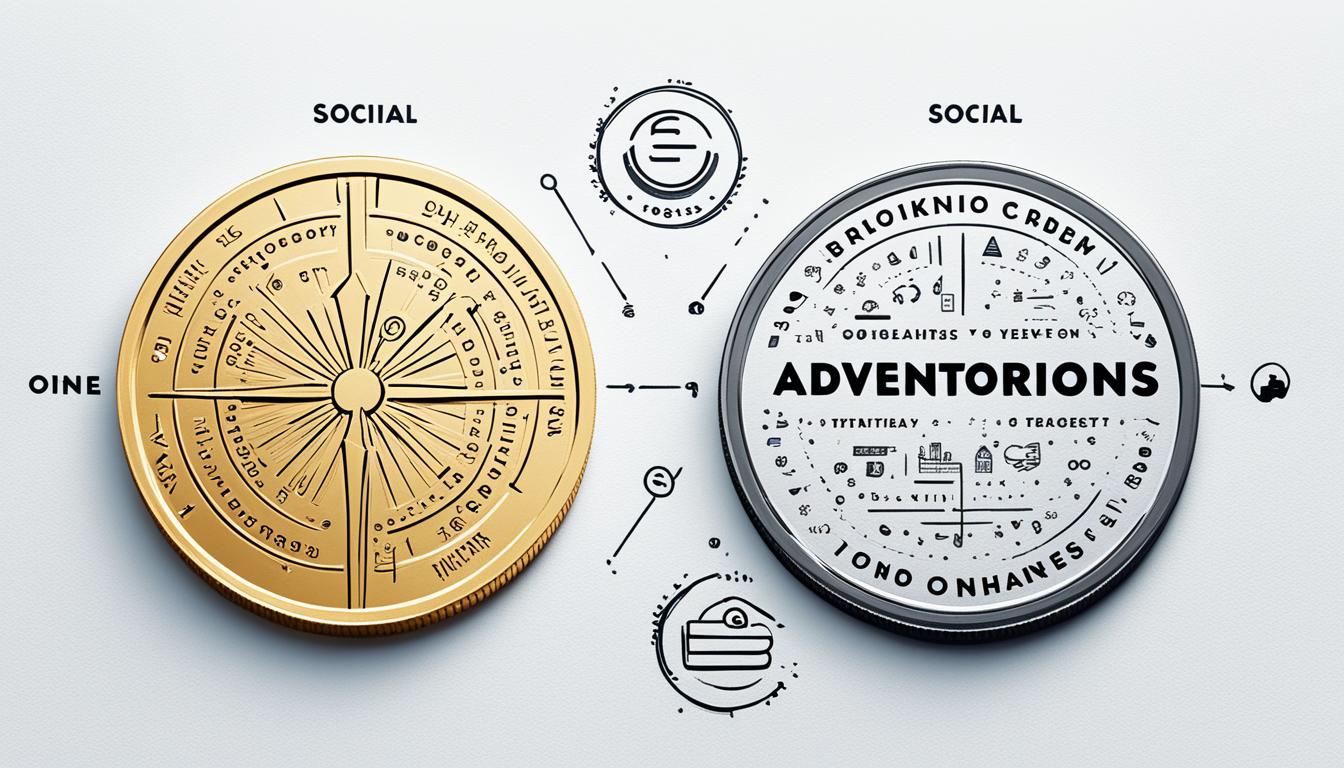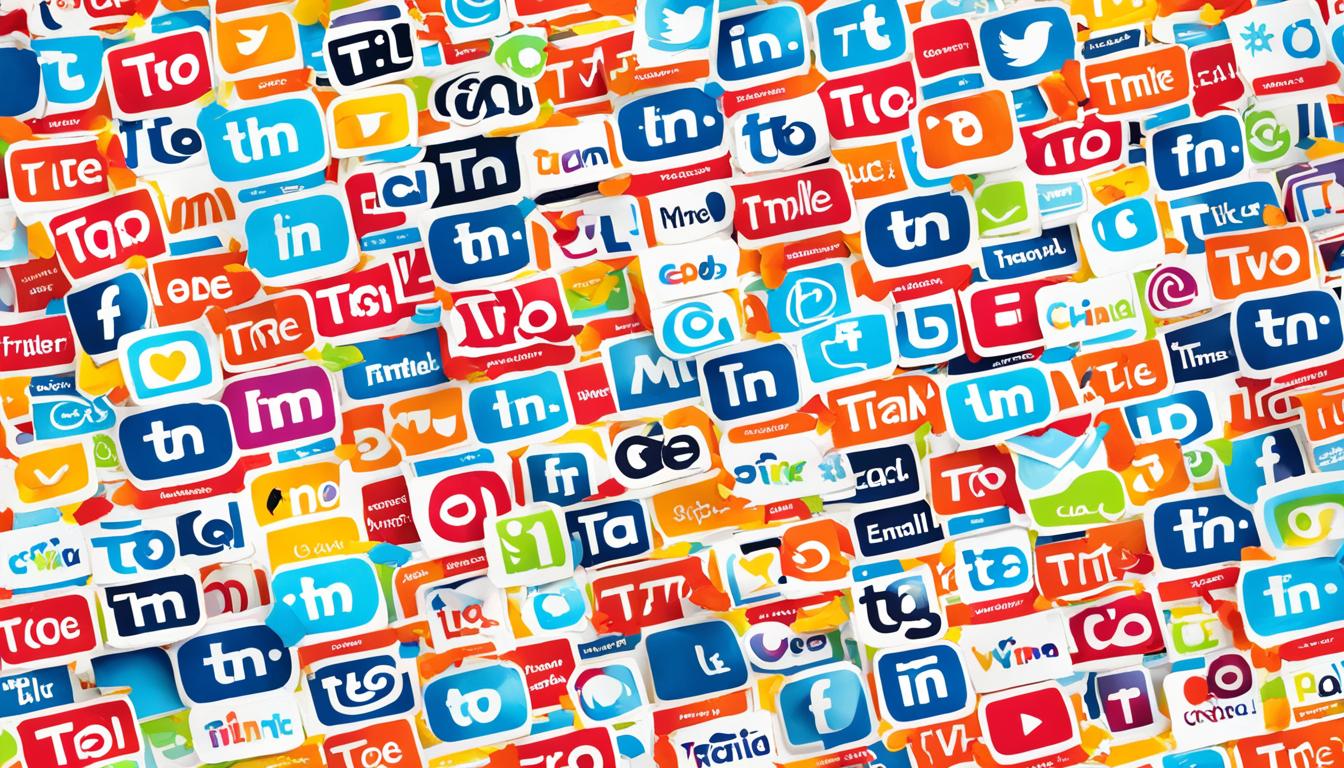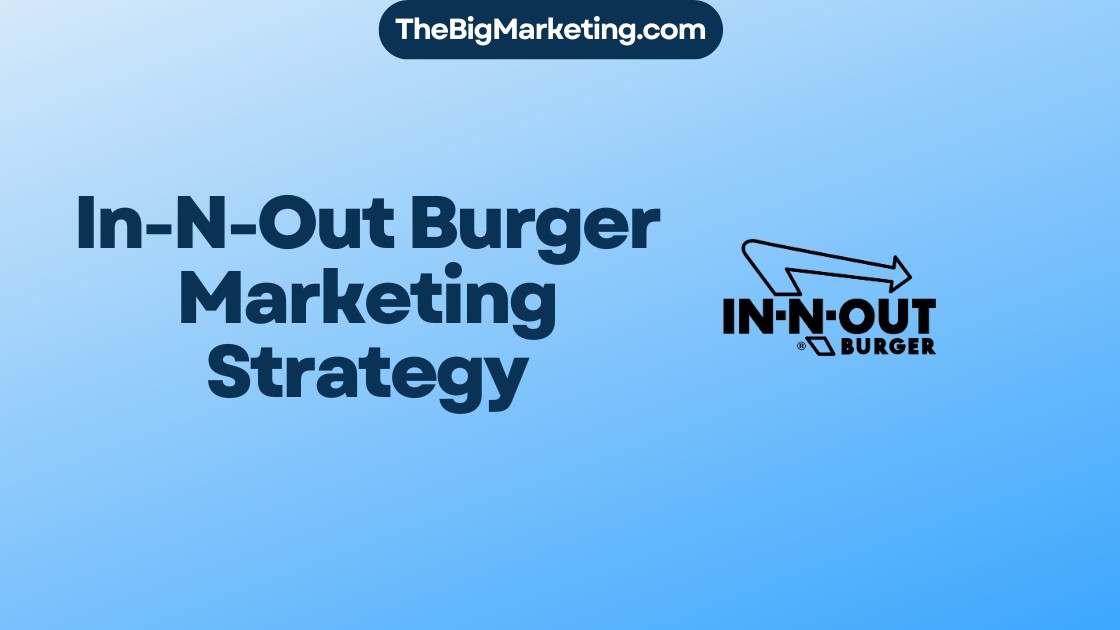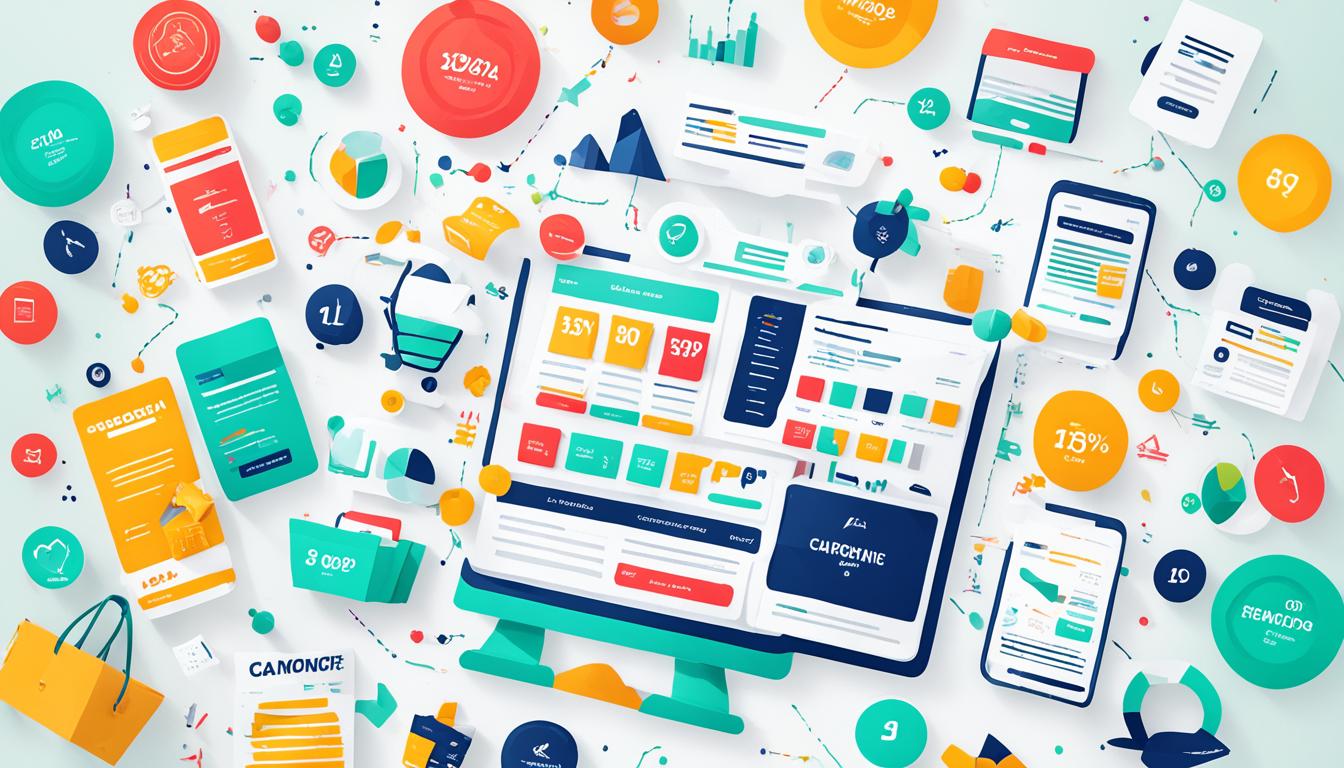In the realm of Marketing Management, two methodologies have emerged as contenders for steering businesses to success: Agile Marketing and Traditional Marketing. Each approach offers unique advantages, but understanding the differences is crucial for making informed decisions. In this comprehensive guide, we’ll dissect the distinctions between Agile Marketing and Traditional Marketing, shedding light on their methodologies, benefits, and considerations.
Key Takeaways:
- Agile Marketing and Traditional Marketing are two contrasting methodologies in the field of Marketing Management.
- Agile Marketing is characterized by its dynamic and flexible approach, while Traditional Marketing follows a linear and planned process.
- Agile Marketing enables quicker time-to-market, customer-centricity, and collaboration, whereas Traditional Marketing offers predictability and in-depth planning.
- The choice between Agile and Traditional Marketing depends on factors such as the pace of change, available resources, and industry dynamics.
- Evaluating the advantages and disadvantages of each approach is crucial to align your marketing strategy with your business goals and objectives.
Defining Traditional Marketing
Traditional Marketing is the time-honored approach that has shaped the marketing landscape for decades. It relies on tried-and-tested strategies, meticulous planning, and a pre-set course of action. Traditional Marketing campaigns follow a linear and structured path, often taking months to develop and execute.
At its core, Traditional Marketing is characterized by its emphasis on detailed planning, extensive market research, and established techniques. Marketers meticulously craft campaigns based on an extensive understanding of their target audience and market dynamics. This approach aims to generate brand awareness, drive customer engagement, and ultimately, achieve business goals.
The key to success in Traditional Marketing lies in creating compelling and persuasive messages that resonate with the target market. Strategies are implemented across various channels such as television, radio, print publications, billboards, and direct mail to reach a wide audience.
Traditional Marketing techniques include:
- Print Advertising: Placing advertisements in newspapers, magazines, brochures, and other print materials.
- Television and Radio Commercials: Engaging audiences through broadcast advertisements.
- Outdoor Advertising: Displaying ads on billboards, transit vehicles, and other public spaces.
- Telemarketing: Reaching out to potential customers through phone calls.
- Direct Mail: Sending physical promotional materials, such as brochures or catalogs, directly to customers’ mailboxes.
- Trade Shows and Events: Participating in industry-specific events to showcase products or services.
Traditional Marketing has a proven track record of success and has helped countless businesses establish their brand presence effectively. However, the rise of digital technologies and changing consumer behaviors have prompted marketers to explore alternative strategies.
How Does Traditional Marketing Work?
Traditional Marketing is a strategic approach that involves extensive planning, meticulous execution, and thorough measurement of campaign performance. This time-tested technique follows a linear process, relying on detailed strategies, predetermined timelines, and allocated budgets to achieve marketing objectives.
Campaigns in Traditional Marketing are carefully planned in advance, taking into account market research, target audience analysis, and competitor evaluation. These insights inform the development of comprehensive strategies aimed at reaching and engaging customers through various marketing channels, such as print, television, radio, and direct mail.
Once the planning phase is complete, Traditional Marketing campaigns are executed step by step, following the predetermined strategies and timelines. This approach leaves little room for changes or adaptations during the course of the campaign. Each element of the campaign, from ad creation to media placement, is executed according to the predetermined plan.
After the campaign comes to an end, the performance metrics are measured and analyzed to evaluate its success. Traditional Marketing relies on data such as sales figures, reach and frequency metrics, customer surveys, and market share data to assess the effectiveness of the campaign. This analysis helps marketers identify strengths and weaknesses, enabling them to refine future strategies and improve overall marketing efforts.
Key Steps in Traditional Marketing:
- Extensive planning based on market research
- Precise execution of predetermined strategies, timelines, and budgets
- Measuring and analyzing performance metrics to evaluate campaign success
Defining Agile Marketing
Agile Marketing is a dynamic and flexible approach that draws inspiration from Agile software development. It revolves around embracing change, adapting to customer needs, and iterating quickly based on feedback. This methodology encourages marketers to be nimble, responsive, and innovative in their strategies.
The Agile approach to marketing is particularly suited for industries where rapid response and constant innovation are essential. It allows businesses to stay ahead of the competition by quickly adapting to evolving market conditions and customer preferences.
Key Principles of Agile Marketing
- Flexibility: Agile Marketing embraces change and operates with a flexible mindset, enabling marketers to quickly pivot their strategies based on emerging trends or customer feedback.
- Continuous Improvement: Marketers using Agile strategies are constantly analyzing data and feedback to identify areas for improvement and make iterative adjustments.
- Customer-Centricity: Adopting the Agile approach means putting the customer at the center of marketing strategies. Marketers prioritize customer needs and preferences, using real-time feedback to inform their decision-making.
- Collaboration: Agile Marketing encourages cross-functional collaboration, fostering innovation and creativity through close teamwork and shared insights.
- Rapid Iteration: Agile Marketing focuses on delivering value quickly through shorter, iterative marketing campaigns or sprints, enabling businesses to adapt and optimize their strategies in real-time.
Benefits of Agile Marketing
Agile Marketing offers numerous benefits for businesses:
| Benefits of Agile Marketing |
|---|
| Increased responsiveness to market changes |
| Improved collaboration and teamwork |
| Enhanced customer-centricity |
| Quicker time-to-market for campaigns |
| Adaptability and flexibility in strategies |
| Ability to iterate and optimize based on real-time data |
How Does Agile Marketing Work?
Agile Marketing is a dynamic and flexible approach that relies on iterative planning, continuous feedback, collaboration, and quick adjustments. Campaigns are broken down into smaller sprints, allowing for manageable and adaptable plans. This methodology thrives on constant customer feedback and data analysis, driving strategic decision-making. Cross-functional teams collaborate closely, fostering innovation and sharing diverse perspectives.
By embracing Agile Marketing, businesses can quickly respond to market changes, optimize performance, and stay ahead of the competition. Strategies are based on real-time data, enabling swift adjustments and ensuring that marketing efforts align with customer needs and preferences.
| Key Principles of Agile Marketing | Benefits |
|---|---|
| Iterative Planning | – Allows for quick adjustments and optimization – Facilitates efficient resource allocation |
| Continuous Feedback | – Ensures campaigns align with customer preferences – Promotes data-driven decision-making |
| Collaboration | – Fosters innovation and diverse perspectives – Enhances problem-solving capabilities |
| Quick Adjustments | – Enables rapid response to market changes – Enhances agility and adaptability |
To implement Agile Marketing practices successfully, it’s essential to establish a culture of flexibility and collaboration within the marketing team. By embracing an iterative approach and leveraging real-time data, businesses can optimize their marketing strategies, drive customer engagement, and achieve sustainable growth.
Comparing the Two Approaches
When comparing Agile Marketing and Traditional Marketing, several key differences emerge. Agile Marketing offers flexibility and the ability to respond to changing markets, allowing businesses to stay adaptive in today’s dynamic environment. On the other hand, Traditional Marketing provides predictability and stability by following a well-defined plan.
One of the key benefits of Agile Marketing is its ability to enable quicker time-to-market. With shorter iterations and constant feedback loops, Agile Marketing allows businesses to launch campaigns faster and make necessary adjustments along the way. This agile approach ensures that marketing strategies align with evolving customer needs and market trends.
Furthermore, Agile Marketing is highly customer-centric. By leveraging real-time feedback and data analysis, Agile Marketing strategies are tailored to meet the specific needs and preferences of target audiences. This customer-centricity allows businesses to deliver more personalized and impactful marketing campaigns.
In contrast, Traditional Marketing may rely more heavily on assumptions and market research. While Traditional Marketing methods emphasize detailed planning and extensive market research, the campaigns may lack the real-time customer insights that drive Agile Marketing. This reliance on assumptions can sometimes lead to less customer-focused strategies.
Another important distinction is the level of collaboration and adaptation. Agile Marketing promotes cross-functional collaboration, with marketing teams working closely with other departments to foster innovation and share diverse perspectives. This collaborative approach enhances creativity and responsiveness, allowing businesses to pivot quickly in response to market changes.
On the other hand, Traditional Marketing may limit collaboration and responsiveness due to its linear and structured nature. Traditional marketing campaigns often follow a predetermined course of action, allowing little room for agile adjustments. While a detailed plan can provide stability, it may be less conducive to adapting to real-time market feedback.
Key Differences at a Glance:
- Flexibility: Agile Marketing offers flexibility to respond to changing markets, while Traditional Marketing provides predictability.
- Time-to-Market: Agile Marketing enables quicker time-to-market, allowing businesses to launch campaigns faster and respond to market opportunities swiftly.
- Customer-Centricity: Agile Marketing focuses on customer needs and preferences through real-time feedback and data analysis, while Traditional Marketing may rely more on assumptions and research.
- Collaboration and Adaptation: Agile Marketing promotes cross-functional collaboration and encourages adaptation, while Traditional Marketing may limit collaboration and responsiveness.
It’s important for businesses to weigh the advantages and disadvantages of Agile Marketing and Traditional Marketing based on their unique needs and industry dynamics. Both approaches have their strengths and can contribute to marketing success when implemented effectively.
Flexibility vs. Predictability
The key difference between Agile Marketing and Traditional Marketing lies in the trade-off between flexibility and predictability. Traditional Marketing’s detailed planning offers predictability, but it may struggle to keep up with rapidly changing markets. Agile Marketing’s flexibility allows businesses to pivot swiftly in response to new trends and customer feedback, but it may require more adaptability from the marketing team.
Flexibility in Agile Marketing
Agile Marketing embraces change and adapts quickly to evolving market conditions. This approach focuses on iterative planning, allowing for adjustments and course corrections along the way. By leveraging real-time data and customer insights, Agile Marketing enables businesses to optimize their strategies and stay ahead of the competition.
Predictability in Traditional Marketing
Traditional Marketing emphasizes detailed planning and follows a linear process. By mapping out campaigns in advance, Traditional Marketing provides a sense of predictability and stability. This approach is well-suited for industries with consistent customer behavior patterns and where long-term planning is necessary.
While both Agile Marketing and Traditional Marketing have their merits, the choice between the two ultimately depends on the specific needs and dynamics of your business. Consider factors such as the pace of change in your industry, available resources, and your team’s willingness to adapt. Striking the right balance between flexibility and predictability is crucial for developing an effective marketing strategy that drives success.
| Agile Marketing | Traditional Marketing | |
|---|---|---|
| Approach | Dynamic and flexible | Linear and planned |
| Response to Change | Swift adaptation to new trends | Relies on pre-set plans |
| Time-to-Market | Quicker execution | Longer development times |
| Customer-Centricity | Real-time feedback-driven | Relies on market research |
| Collaboration | Encourages cross-functional collaboration | May limit collaboration |
Speed of Execution
When it comes to speed of execution, Agile Marketing and Traditional Marketing take different approaches. Agile Marketing’s iterative methodology allows businesses to quickly bring their campaigns to market, enabling them to respond rapidly to both opportunities and challenges. By breaking down campaigns into smaller, manageable sprints, Agile Marketing allows for quick adjustments and adaptations based on real-time feedback.
On the other hand, Traditional Marketing follows a linear process that may result in longer campaign development and execution times. With its detailed planning and extensive market research, Traditional Marketing aims to create a well-thought-out strategy. While this comprehensive planning provides stability, it may also lead to a slower time-to-market when compared to Agile Marketing.
Customer-Centricity
In today’s competitive market landscape, businesses must prioritize the needs and preferences of their customers to stay ahead. Agile Marketing embraces a customer-centric approach, putting the customer at the center of every decision. By leveraging real-time feedback and data, Agile Marketing enables businesses to create more tailored and impactful marketing strategies that resonate with their target audience.
On the other hand, Traditional Marketing tends to rely more on assumptions and market research to shape campaigns. While market research can provide valuable insights, it may not capture the dynamic and ever-changing preferences of customers. This reliance on assumptions and research can lead to less customer-focused campaigns that fail to engage and resonate with the target audience.
By adopting Agile Marketing, businesses can gain a deeper understanding of their customers and their evolving needs. This customer-centricity allows for the development of highly personalized and targeted strategies that address specific pain points and desires. Agile Marketing empowers businesses to iterate quickly and make necessary adjustments based on real-time feedback, ensuring that campaigns remain relevant and impactful.
| Customer-Centricity | Agile Marketing | Traditional Marketing |
|---|---|---|
| Focus | Customer needs and preferences | Assumptions and market research |
| Approach | Real-time feedback and data-driven | Research-based |
| Benefits | – Highly tailored and targeted strategies – Better engagement and resonance – Continuous improvement based on customer feedback |
– Insights from market research – Generalized campaigns – Limited adaptation to customer preferences |
Collaboration and Adaptation
In the realm of marketing, collaboration and adaptation play a crucial role in determining the success of a marketing strategy. This section explores the differing approaches of Agile Marketing and Traditional Marketing in fostering collaboration and adapting to dynamic market changes.
Agile Marketing’s Emphasis on Collaboration
Agile Marketing prioritizes cross-functional collaboration, bringing together diverse perspectives and skill sets to foster innovation. By breaking down silos and promoting open communication, Agile Marketing teams can work together seamlessly, leveraging their collective expertise to drive impactful campaigns. This collaborative approach results in creative problem-solving, quicker decision-making, and continuous improvement.
Traditional Marketing: Limited Collaboration, Solid Foundation
On the other hand, Traditional Marketing typically follows a linear approach, which may limit collaboration between different departments. While Traditional Marketing may lack the same level of interdepartmental collaboration as Agile Marketing, it excels in providing a solid foundation through its detailed planning process. This planning allows for uniform execution, with each team member fulfilling their predetermined roles and responsibilities.
Despite the potential limitations, Traditional Marketing’s meticulous planning can bring structure and stability to a campaign, ensuring that each aspect is thoroughly considered before execution.
Adaptation: Agile Marketing’s Agility
Adaptation is a critical aspect of marketing success, enabling businesses to respond proactively to changing market trends and consumer needs. Agile Marketing shines in this regard, as its iterative and flexible approach allows for quick adjustments based on real-time data and feedback. Agile teams can pivot swiftly, refining their strategies to align with evolving customer expectations and market conditions.
Traditional Marketing: A Linear Approach
Traditional Marketing, with its linear process, may struggle to adapt rapidly to market changes. Due to the extensive planning involved, making changes mid-campaign can be challenging. However, by implementing in-depth market research and considering various scenarios during the planning phase, Traditional Marketing can still anticipate and respond effectively to foreseeable changes, even if the process may be more time-consuming.
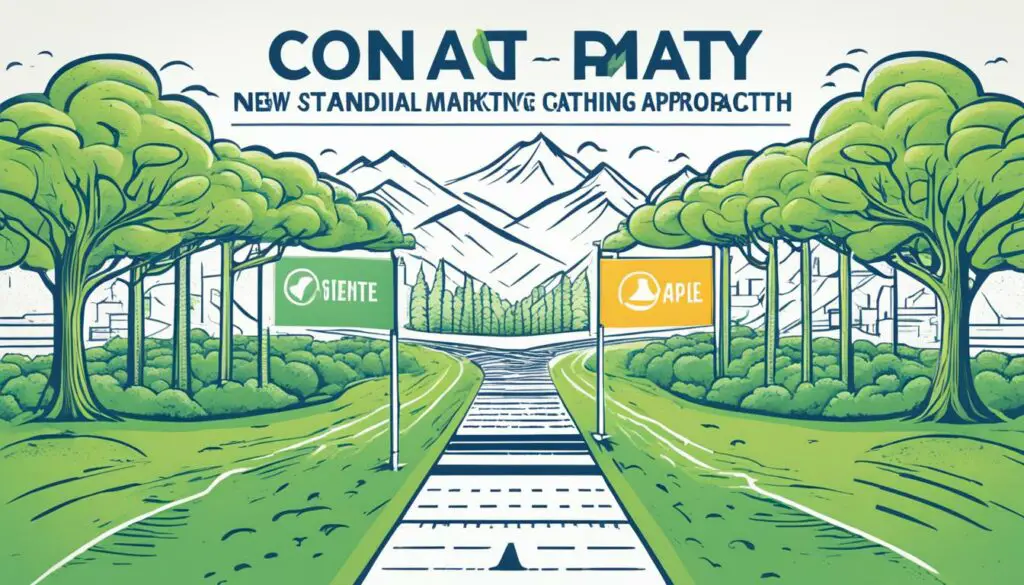
The image above represents the contrast between Agile Marketing and Traditional Marketing in terms of collaboration and adaptation, showcasing their differing approaches and outcomes.
While Agile Marketing offers the benefits of cross-functional collaboration and quick adaptation, Traditional Marketing provides the stability of carefully planned execution.
Next, we will delve into the factors that businesses should consider when choosing between Agile Marketing and Traditional Marketing methodologies.
Conclusion
After carefully considering the distinctions between Agile Marketing and Traditional Marketing, it is clear that both approaches have their benefits. Agile Marketing excels in its ability to provide rapid response and customer-centricity, allowing businesses to adapt quickly to changing market conditions. On the other hand, Traditional Marketing offers predictability and in-depth planning, providing a solid foundation for execution.
The choice between Agile and Traditional Marketing ultimately depends on your business’s unique needs, industry, and customer expectations. If your industry requires constant innovation and quick adaptation, Agile Marketing may be the best fit. However, if stability and a well-planned strategy are critical, Traditional Marketing might be the better choice.
When making this decision, consider factors such as the pace of change in your industry, the resources available to you, and the willingness of your team to adopt new approaches. Keep in mind that your marketing strategy should be agile and adaptable to stay ahead in today’s dynamic market landscape.
By embracing the right methodology for your business, you can harness the power of Agile Marketing or Traditional Marketing to drive success and achieve your marketing goals.
Conclusion
Both Agile Marketing and Traditional Marketing have their merits. Agile Marketing excels in its ability to respond rapidly to market changes and its customer-centric approach. By leveraging real-time feedback, Agile Marketing can tailor strategies to meet the evolving needs and preferences of customers.
On the other hand, Traditional Marketing offers predictability and in-depth planning. Its comprehensive approach allows businesses to carefully strategize and execute campaigns based on extensive market research and analysis.
When deciding between Agile Marketing and Traditional Marketing, it’s essential to evaluate your business’s unique needs and the dynamic nature of your industry. Consider the advantages and disadvantages of each approach, and select the methodology that best aligns with your goals and objectives. Keep in mind that in today’s fast-paced market landscape, an agile and adaptable marketing strategy is crucial for staying ahead of the competition.
FAQ
What is the difference between Agile Marketing and Traditional Marketing?
Agile Marketing is a dynamic and flexible approach that embraces change and quickly adapts to customer needs based on feedback. Traditional Marketing, on the other hand, follows a linear and planned approach with campaigns that take months to develop and execute.
How does Traditional Marketing work?
Traditional Marketing relies on detailed planning, extensive market research, and a pre-set course of action. Campaigns are meticulously planned in advance, executed step by step, and performance metrics are measured after the campaign ends.
How does Agile Marketing work?
Agile Marketing follows principles such as iterative planning, continuous feedback, collaboration, and quick adjustments. Campaigns are broken down into smaller sprints with flexible plans that can adapt to changes. Real-time data and customer feedback are used to optimize strategies.
What are the key differences between Agile Marketing and Traditional Marketing?
Agile Marketing offers flexibility and the ability to respond to changing markets, while Traditional Marketing provides predictability. Agile Marketing enables quicker time-to-market and customer-centricity, while Traditional Marketing may rely more on assumptions and market research. Agile Marketing promotes collaboration and adaptation, while Traditional Marketing may limit collaboration and responsiveness.
What is the trade-off between flexibility and predictability in Agile Marketing and Traditional Marketing?
Traditional Marketing’s detailed planning offers predictability, but it may struggle to keep up with rapidly changing markets. Agile Marketing’s flexibility allows businesses to pivot swiftly in response to new trends and customer feedback, but it may require more adaptability from the marketing team.
How does Agile Marketing benefit businesses?
Agile Marketing enables quicker time-to-market, customer-centricity, and the ability to respond rapidly to opportunities and challenges. It promotes cross-functional collaboration and encourages teams to adapt to changing circumstances, fostering innovation and responsiveness.
How does Traditional Marketing benefit businesses?
Traditional Marketing provides in-depth planning, stability, and predictability. It may create a solid foundation for execution and can be beneficial in industries or situations where rapid response and constant innovation are not critical.
Which marketing methodology should I choose for my business?
The choice between Agile Marketing and Traditional Marketing depends on your business’s unique needs, industry, and customer expectations. Consider factors such as the pace of change, available resources, and your team’s willingness to adopt new approaches when making your decision.
Why is customer-centricity important in Agile Marketing?
Agile Marketing places the customer at the center, using real-time feedback to shape campaigns. This customer-centric approach leads to more tailored and impactful marketing strategies.
How does collaboration and adaptation differ in Agile Marketing and Traditional Marketing?
Agile Marketing promotes cross-functional collaboration and encourages teams to adapt quickly to market changes. Traditional Marketing’s linear approach might limit collaboration and the ability to adapt swiftly.
